|
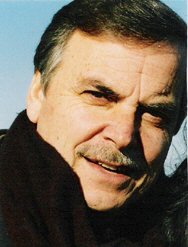 Onésimo
Teotónio Almeida: Born on São
Miguel in the Azores, Onésimo graduated from Lisbon's Portuguese Catholic
University and earned his M.A. and Ph.D. in Philosophy from Brown
University, where he has been teaching Portuguese Cultural and Intellectual
History since 1975. He has written short stories, plays, and crónicas, and
is the author and editor of numerous books; in 1987 he won the Roberto de
Mesquita essay prize. He is a prolific academic author as well as a frequent
contributor to the Portuguese press in the US and Canada. Onésimo founded and
directs Gávea-Brown Publications, founded and is co-editor of the journal
Gávea-Brown, and is co-editor of the recently-created e-Journal of
Portuguese History (a joint-venture between Brown University and the
University of Porto). He is active on the editorial board of several professional
journals, and in various professional organizations. He was elected
to the Academia Internacional de Cultura Portuguesa, Lisbon. Since 1979 he
has hosted a bi-monthly socio-cultural talk show on the Portuguese Channel
in Massachusetts, and from 2001 to 2003 hosted a weekly talk show
on RTP-Açores, later broadcast worldwide by RTP-International. He has served
on Rhode Island's Committee for the Humanities, of which he was Vice President
from 1998 to 2000. He is a past President of the Cultural Association of the
Atlantic Islands, and served as Vice President of the Associação
Internacional de Lusitanistas. Onésimo was named an "Oficial da Ordem do Infante
D. Henrique" by the President of Portugal, and was awarded the
Insígnia Autonómica de Mérito Profissional by the Azorean government at
its 2009 Azores Day ceremony in Toronto, Canada. Onésimo
Teotónio Almeida: Born on São
Miguel in the Azores, Onésimo graduated from Lisbon's Portuguese Catholic
University and earned his M.A. and Ph.D. in Philosophy from Brown
University, where he has been teaching Portuguese Cultural and Intellectual
History since 1975. He has written short stories, plays, and crónicas, and
is the author and editor of numerous books; in 1987 he won the Roberto de
Mesquita essay prize. He is a prolific academic author as well as a frequent
contributor to the Portuguese press in the US and Canada. Onésimo founded and
directs Gávea-Brown Publications, founded and is co-editor of the journal
Gávea-Brown, and is co-editor of the recently-created e-Journal of
Portuguese History (a joint-venture between Brown University and the
University of Porto). He is active on the editorial board of several professional
journals, and in various professional organizations. He was elected
to the Academia Internacional de Cultura Portuguesa, Lisbon. Since 1979 he
has hosted a bi-monthly socio-cultural talk show on the Portuguese Channel
in Massachusetts, and from 2001 to 2003 hosted a weekly talk show
on RTP-Açores, later broadcast worldwide by RTP-International. He has served
on Rhode Island's Committee for the Humanities, of which he was Vice President
from 1998 to 2000. He is a past President of the Cultural Association of the
Atlantic Islands, and served as Vice President of the Associação
Internacional de Lusitanistas. Onésimo was named an "Oficial da Ordem do Infante
D. Henrique" by the President of Portugal, and was awarded the
Insígnia Autonómica de Mérito Profissional by the Azorean government at
its 2009 Azores Day ceremony in Toronto, Canada.
– Adapted from faculty profile,
Brown University |
|
|
|
 Abel
Alves (1936-2002): "He was an emblem. There was no Lusophone conference
in which he did not participate, nor activity related to the promotion of
the Portuguese language to which, if he knew about it and it was necessary,
he did not give his name, his word and the most that was asked of him.
Abel Alves was raised in the
Portuguese school of his home. Of the third generation, it had already been
his grandparents who had emigrated to Southern California. Abel took pride
in still speaking Portuguese with that Terceiran accent of his, as redolent
of his island as if it had just popped out of an Altares bread oven the
night before. And he made a production of exhibiting his grandchildren
raised in the same school. Abel was devoted to the Luso associations of his
parents, he defended bilingual education and struggled for the preservation
of the traditions of his island, with the firmness and gentleness of one who
demands by right but knows how to do it with democratic gestures inherited
from bygone chivalrous gems. But about Abel Alves – Abe – everything
has already been said, in a form that could have been put on his gravestone,
in the poem by Vasco Pereira da Costa from his extraordinary
My Californian Friends." Abel
Alves (1936-2002): "He was an emblem. There was no Lusophone conference
in which he did not participate, nor activity related to the promotion of
the Portuguese language to which, if he knew about it and it was necessary,
he did not give his name, his word and the most that was asked of him.
Abel Alves was raised in the
Portuguese school of his home. Of the third generation, it had already been
his grandparents who had emigrated to Southern California. Abel took pride
in still speaking Portuguese with that Terceiran accent of his, as redolent
of his island as if it had just popped out of an Altares bread oven the
night before. And he made a production of exhibiting his grandchildren
raised in the same school. Abel was devoted to the Luso associations of his
parents, he defended bilingual education and struggled for the preservation
of the traditions of his island, with the firmness and gentleness of one who
demands by right but knows how to do it with democratic gestures inherited
from bygone chivalrous gems. But about Abel Alves – Abe – everything
has already been said, in a form that could have been put on his gravestone,
in the poem by Vasco Pereira da Costa from his extraordinary
My Californian Friends."
– Dr. Onésimo T. Almeida, Mundo Português,
2002 (adapted and translated by Katharine F. Baker) |
|
|
|
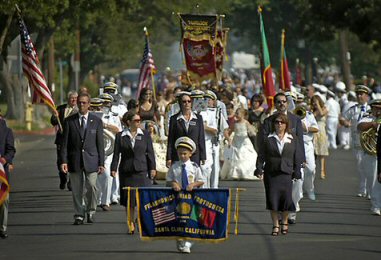 Feast of Our Lady of Miracles of Serreta, in Gustine, California:
The population in Gustine triples the second week of September as crowds
converge on the community for the OLM Celebration, as they have each year
since 1936. A Portuguese tradition from the Azorean island of Terceira
started in the mid 1700s, the Celebration was brought to the community of
Gustine by a group of immigrants;
Azorean immigrant Manuel B. Souza had experienced the local celebration
during a visit to his home village on Terceira. The spirituality of the
devotion and the gathering of the people gave him the desire to bring the
tradition home to his fellow Azorean community in Gustine. Other
festive customs were included in the festa: the Bodo de Leite
(blessing of the cows), milk and sweet bread being shared; Cantoria ao
Desafio (singers challenging each other in song); and bullfights and
more dancing and singing. These were the highlights of the annual
celebration of Our Lady of Miracles in Serreta, Terceira. When Souza
returned from his visit, he suggested to friends that Gustine
should have such a celebration. He commissioned a
statue duplicating the one in Terceira, and a group of local
men worked diligently to organize the first celebration and include the many
traditional events just as in Terceira... A chance to meet and gather is
another draw for who attend the week long event. Feast of Our Lady of Miracles of Serreta, in Gustine, California:
The population in Gustine triples the second week of September as crowds
converge on the community for the OLM Celebration, as they have each year
since 1936. A Portuguese tradition from the Azorean island of Terceira
started in the mid 1700s, the Celebration was brought to the community of
Gustine by a group of immigrants;
Azorean immigrant Manuel B. Souza had experienced the local celebration
during a visit to his home village on Terceira. The spirituality of the
devotion and the gathering of the people gave him the desire to bring the
tradition home to his fellow Azorean community in Gustine. Other
festive customs were included in the festa: the Bodo de Leite
(blessing of the cows), milk and sweet bread being shared; Cantoria ao
Desafio (singers challenging each other in song); and bullfights and
more dancing and singing. These were the highlights of the annual
celebration of Our Lady of Miracles in Serreta, Terceira. When Souza
returned from his visit, he suggested to friends that Gustine
should have such a celebration. He commissioned a
statue duplicating the one in Terceira, and a group of local
men worked diligently to organize the first celebration and include the many
traditional events just as in Terceira... A chance to meet and gather is
another draw for who attend the week long event.
– Adapted
from "OLM celebration reflects deep devotion, long-standing traditions of
the Portuguese faithful," by Julie Rose.
Mattos
Newspapers, 28 Jun 2007 |
|
|
|
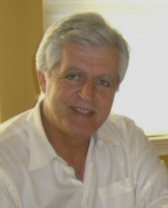 Tony Goulart:
Born in São Caetano, Pico, Tony attended seminary in the Azores for nine
years in his youth. In 1974 he immigrated to San Jose, California, where the rest of his immediate family was
already residing. There he attended San Jose State University, then established a
drywall firm with his brother José; later Tony earned both his Bachelor's
and Master's degrees in Business Administration from the University of San Francisco. Tony
has long been active in Luso-American organizations, and met Vasco Pereira
da Costa two decades ago when Vasco (then a professor and supervisor of teacher training in
Coimbra) was guest speaker at a conference Tony helped organize in
California to promote Portuguese language education. In 1991 Tony founded the
Portuguese Chamber of Commerce of California [Câmara de Comércio Portuguesa
da Califórnia]. He is Vice-President of
Portuguese Heritage Publications of
California, in which capacity he coordinated the publication of their 2008 book Capelinhos: A Volcano of
Synergies; he also coordinated research for PHPC's book The Holy
Ghost Festas: A Historic Perspective of the Portuguese in California, as
well as the publication of My Californian Friends: Poetry and the
English translation of The Portuguese Presence in California by Dr.
Eduardo Mayone Dias (September 2009). As a public speaker Tony has presented
the talk The Portuguese-American Community in Northern California: Waves
of Immigration from the Azores. Tony Goulart:
Born in São Caetano, Pico, Tony attended seminary in the Azores for nine
years in his youth. In 1974 he immigrated to San Jose, California, where the rest of his immediate family was
already residing. There he attended San Jose State University, then established a
drywall firm with his brother José; later Tony earned both his Bachelor's
and Master's degrees in Business Administration from the University of San Francisco. Tony
has long been active in Luso-American organizations, and met Vasco Pereira
da Costa two decades ago when Vasco (then a professor and supervisor of teacher training in
Coimbra) was guest speaker at a conference Tony helped organize in
California to promote Portuguese language education. In 1991 Tony founded the
Portuguese Chamber of Commerce of California [Câmara de Comércio Portuguesa
da Califórnia]. He is Vice-President of
Portuguese Heritage Publications of
California, in which capacity he coordinated the publication of their 2008 book Capelinhos: A Volcano of
Synergies; he also coordinated research for PHPC's book The Holy
Ghost Festas: A Historic Perspective of the Portuguese in California, as
well as the publication of My Californian Friends: Poetry and the
English translation of The Portuguese Presence in California by Dr.
Eduardo Mayone Dias (September 2009). As a public speaker Tony has presented
the talk The Portuguese-American Community in Northern California: Waves
of Immigration from the Azores.
– Adapted
from "Tony Goulart: Líder do maior projecto
editorial das comunidades portuguesas da América."
Mundo Português, Dec 2002 |
|
|
|
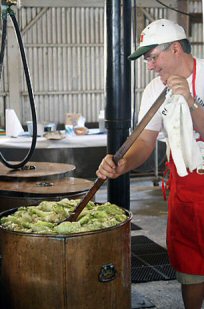 Holy
Ghost Festival: Portuguese Holy Ghost Festas take place each year in
late spring and summer in the Azores, and in Portuguese communities
throughout North America and around the world. The tradition dates back to
Queen Isabella of Portugal, and is a celebration of faith, of thanksgiving
and tradition. The typical Festa may feed as many as 800 to 1200 people.
Cooking food for that many people is a sight to behold. The preparations for
the two meals start four days before the Festa at the local Portuguese Hall.
The meat is raised, butchered and donated by local Portuguese farmers. The
sopas and side dishes are prepared by hand. It is a staggering amount
of chopped cabbage, sliced onions, diced eggs, deboning meat, peeled
potatoes... It is a family affair, everyone helps out, the sense of
community is abundant, the work involved doesn't seem like work because of
the camaderie gained. Holy
Ghost Festival: Portuguese Holy Ghost Festas take place each year in
late spring and summer in the Azores, and in Portuguese communities
throughout North America and around the world. The tradition dates back to
Queen Isabella of Portugal, and is a celebration of faith, of thanksgiving
and tradition. The typical Festa may feed as many as 800 to 1200 people.
Cooking food for that many people is a sight to behold. The preparations for
the two meals start four days before the Festa at the local Portuguese Hall.
The meat is raised, butchered and donated by local Portuguese farmers. The
sopas and side dishes are prepared by hand. It is a staggering amount
of chopped cabbage, sliced onions, diced eggs, deboning meat, peeled
potatoes... It is a family affair, everyone helps out, the sense of
community is abundant, the work involved doesn't seem like work because of
the camaderie gained.
The typical Festa begins with a
parade. Tradition has it that a little girl and young woman are both crowned
Queen for the day. Different legends surround the origins of the Festa,
although all pertain to Portugal’s 13th-century Queen Isabel and
a miracle involving feeding the poor; the festa is a feast of thanksgiving
in her memory. A crown, symbolizing Queen Isabel, is carried in the parade
by the last year's festa Queen. The procession begins at the Portuguese
social hall and ends at the local Catholic Church. During the Mass the
priest places the crown on those who want a special blessing. The crown is
blessed and carried out by the new Queen. After the parade everyone returns
to the Portuguese hall, where lunch is served. Long tables are set up for a
traditional Portuguese meal.
Sopas, a typical festa food, is made by
simmering beef bones, with spices and cabbage for hours in a large copper
pot. The beef is cooked in large pots with onions, garlic, bacon, red wine,
and a selection of secret spices, cinnamon being one of them. Then when the
broth is done it is poured over thick sliced French bread with mint, and
served piping hot.
– Excerpted
from Corey Amaro's blog Tongue-in-Cheek, Jun 2008,
Part 1 &
Part 2
See also
Patricia M. Walsh:
"Portuguese Festa:
99 years of
pageantry, family tradition: Older generations try to engage youth in rich
history," San Diego, California,
Peninsula Beacon, 27 May 2009 |
|
|
|
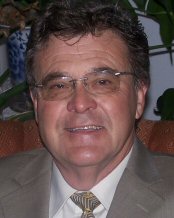 Manuel
Homem: A native of the famous wine-growing town of Biscoitos in the
northwest quadrant of the island of Terceira, Manuel has known Vasco Pereira da Costa since their childhoods
in the Azores,
as their fathers were friends there. Like Vasco, Manuel attended Angra do
Heroísmo, Terceira's, respected Liceu Nacional. Then he journeyed from the Azores to
the United States on a student visa in order to attend San Jose City College and
Hayward State University in California. While employed by a transportation company for
many years, he completed his Bachelor's degree in Business Administration at
the University of Phoenix and also received a diploma in Transportation
Administration from Golden Gate University. In the late 1980s and the 1990s
he was very active in the Portuguese-Californian community, with much of his
spare time devoted to volunteering with San Jose's
Portuguese Athletic
Club. In 1989 he helped reorganize Boxer's Mayfair Village, a
senior apartment community in San Jose with a population of about 600
residents; he then took over the company as property manager in 1993. Manuel
is now enjoying a well-earned early retirement with his family. Manuel
Homem: A native of the famous wine-growing town of Biscoitos in the
northwest quadrant of the island of Terceira, Manuel has known Vasco Pereira da Costa since their childhoods
in the Azores,
as their fathers were friends there. Like Vasco, Manuel attended Angra do
Heroísmo, Terceira's, respected Liceu Nacional. Then he journeyed from the Azores to
the United States on a student visa in order to attend San Jose City College and
Hayward State University in California. While employed by a transportation company for
many years, he completed his Bachelor's degree in Business Administration at
the University of Phoenix and also received a diploma in Transportation
Administration from Golden Gate University. In the late 1980s and the 1990s
he was very active in the Portuguese-Californian community, with much of his
spare time devoted to volunteering with San Jose's
Portuguese Athletic
Club. In 1989 he helped reorganize Boxer's Mayfair Village, a
senior apartment community in San Jose with a population of about 600
residents; he then took over the company as property manager in 1993. Manuel
is now enjoying a well-earned early retirement with his family. |
|
|
|
 Álamo
Oliveira: One of the Azores' most
acclaimed and prolific living writers and leading cultural figures, Álamo
was born in the village of Raminho on Terceira. He studied
Philosophy at the Angra do Heroísmo Seminary and served in the Portuguese
army in Guinea-Bissau. Although the rest of his immediate family immigrated
to California, Álamo remained in the Azores, where he pursued a
distinguished government career in addition to being a novelist, poet,
playwright, lyricist, essayist, public speaker, painter and founder-director
of Angra do Heroísmo’s leading theater company, the
Alpendre Theater.
He is coordinator of the twice-yearly journal
andarILHAgem,
launched
by the Azores' Directorate of
Communities
in 2007. In Spring 2002 Álamo became the first Portuguese
writer-in-residence at the University of California-Berkeley. Other honors
include the Prémio de Teatro Almeida Garrett for his play A solidão da
casa do regalo and the Maré Viva prize for his novel Até hoje (memórias
de cão). He is one of three major Azorean writers profiled in the 2005
Portuguese documentary
Aventuras do Espirito, which includes a
biographical sketch and commentaries by the author, as well as Álamo reading
from one of his short-stories. Various
writings of Álamo's have been translated into English, French, Spanish,
Croatian and Japanese. His literary output includes two anthologies, three
books of essays, six books of fiction, 11 plays and 13 books of poetry. His
1999 novel Já não gosto de chocolates – from which I No Longer
Like Chocolates was translated by Diniz Borges and Katharine F. Baker –
has been taught in North American university courses in Modern Portuguese
Fiction and Portuguese Island Culture; in 2008, Random House Kodansha
published
Kiwamu Hamaoka's
Japanese
translation of the work. Álamo
Oliveira: One of the Azores' most
acclaimed and prolific living writers and leading cultural figures, Álamo
was born in the village of Raminho on Terceira. He studied
Philosophy at the Angra do Heroísmo Seminary and served in the Portuguese
army in Guinea-Bissau. Although the rest of his immediate family immigrated
to California, Álamo remained in the Azores, where he pursued a
distinguished government career in addition to being a novelist, poet,
playwright, lyricist, essayist, public speaker, painter and founder-director
of Angra do Heroísmo’s leading theater company, the
Alpendre Theater.
He is coordinator of the twice-yearly journal
andarILHAgem,
launched
by the Azores' Directorate of
Communities
in 2007. In Spring 2002 Álamo became the first Portuguese
writer-in-residence at the University of California-Berkeley. Other honors
include the Prémio de Teatro Almeida Garrett for his play A solidão da
casa do regalo and the Maré Viva prize for his novel Até hoje (memórias
de cão). He is one of three major Azorean writers profiled in the 2005
Portuguese documentary
Aventuras do Espirito, which includes a
biographical sketch and commentaries by the author, as well as Álamo reading
from one of his short-stories. Various
writings of Álamo's have been translated into English, French, Spanish,
Croatian and Japanese. His literary output includes two anthologies, three
books of essays, six books of fiction, 11 plays and 13 books of poetry. His
1999 novel Já não gosto de chocolates – from which I No Longer
Like Chocolates was translated by Diniz Borges and Katharine F. Baker –
has been taught in North American university courses in Modern Portuguese
Fiction and Portuguese Island Culture; in 2008, Random House Kodansha
published
Kiwamu Hamaoka's
Japanese
translation of the work.
–
Excerpted from
I No
Longer Like Chocolates
website |
|
|
|
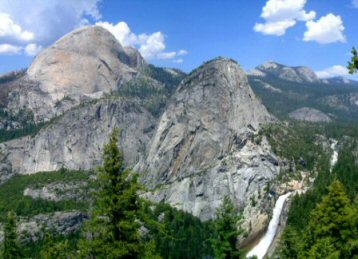 Yosemite
National Park:
It is by
far the grandest of all the special temples of Nature I was ever permitted
to enter.
– John
Muir. I
have seen persons of emotional temperament stand with tearful eyes,
spellbound and dumb with awe, as they got their first view of the Valley
from Inspiration Point, overwhelmed in the sudden presence of the
unspeakable, stupendous grandeur.
– Galen
Clark, guardian of the Yosemite. Yosemite
National Park:
It is by
far the grandest of all the special temples of Nature I was ever permitted
to enter.
– John
Muir. I
have seen persons of emotional temperament stand with tearful eyes,
spellbound and dumb with awe, as they got their first view of the Valley
from Inspiration Point, overwhelmed in the sudden presence of the
unspeakable, stupendous grandeur.
– Galen
Clark, guardian of the Yosemite.
Glaciation 1.2 million years ago
filled Yosemite Valley to the brim and excavated the valley. This glacier
advanced down the deep, narrow canyons created by the rivers. In the Valley,
glacial ice traveling through was thousands of feet deep. Half Dome
projected 900 feet above the ice, but many peaks to the north were engulfed.
The grinding, gouging action of the heavy river of ice eroded the canyons
and valleys, and widened and deepened them into U-shaped troughs. A system
of joints and cracks in the granite allowed the glacier to erode out great
blocks of granite at vulnerable points and carry them away. In other areas
the glacier merely scraped, buffed, and polished the granite surface. Later
glaciations did not fill the valley as much as this early glacier; spires
were formed by weathering processes over the past million years. The last
period of glaciation in Yosemite Valley began 30,000 years ago and ended
about 10,000 years ago.
The Ahwahneechee people lived here
for generations: seven present-day tribes descend from the people who first
called this area home. As Europeans arrived in the mid-1800s, violent
disruption ensued that displaced the native populations. Early white
settlers arrived and hosted writers, artists, and photographers who spread
the fame of "the Incomparable Valley" throughout the world. Within
Yosemite’s history, various cultures abounded that left a mark. Historic
mining sites remain from miners who came to the Sierra to seek their fortune
in gold. Early lodging establishments, like the Wawona Hotel, offered a more
primitive setting for the Valley’s first tourists and today's visitors, and
more elegant lodging, like The Ahwahnee, was added to satisfy those looking
for comfort. History books detail the Mariposa Battalion entering Yosemite
Valley in 1851 to remove the Ahwahneechee. As Euro-American settlement
occurred, people arrived on foot, on horseback and by rail to rustic hotels.
Parts of the landscape were exploited, spurring conservationists to appeal
for protections. President Abraham Lincoln signed an 1864 bill granting
Yosemite Valley and the Mariposa Grove to the State of California. John Muir
helped spark the creation of Yosemite National Park in 1890.
– Excerpted from Yosemite National Park
website |
|
|
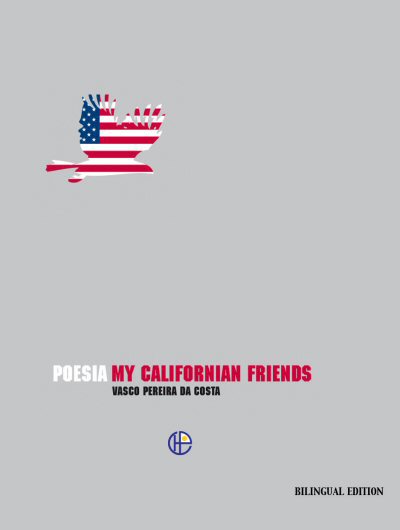
 Onésimo
Teotónio Almeida: Born on São
Miguel in the Azores, Onésimo graduated from Lisbon's Portuguese Catholic
University and earned his M.A. and Ph.D. in Philosophy from Brown
University, where he has been teaching Portuguese Cultural and Intellectual
History since 1975. He has written short stories, plays, and crónicas, and
is the author and editor of numerous books; in 1987 he won the Roberto de
Mesquita essay prize. He is a prolific academic author as well as a frequent
contributor to the Portuguese press in the US and Canada. Onésimo founded and
directs Gávea-Brown Publications, founded and is co-editor of the journal
Gávea-Brown, and is co-editor of the recently-created e-Journal of
Portuguese History (a joint-venture between Brown University and the
University of Porto). He is active on the editorial board of several professional
journals, and in various professional organizations. He was elected
to the Academia Internacional de Cultura Portuguesa, Lisbon. Since 1979 he
has hosted a bi-monthly socio-cultural talk show on the Portuguese Channel
in Massachusetts, and from 2001 to 2003 hosted a weekly talk show
on RTP-Açores, later broadcast worldwide by RTP-International. He has served
on Rhode Island's Committee for the Humanities, of which he was Vice President
from 1998 to 2000. He is a past President of the Cultural Association of the
Atlantic Islands, and served as Vice President of the Associação
Internacional de Lusitanistas. Onésimo was named an "Oficial da Ordem do Infante
D. Henrique" by the President of Portugal, and was awarded the
Insígnia Autonómica de Mérito Profissional by the Azorean government at
its 2009 Azores Day ceremony in Toronto, Canada.
Onésimo
Teotónio Almeida: Born on São
Miguel in the Azores, Onésimo graduated from Lisbon's Portuguese Catholic
University and earned his M.A. and Ph.D. in Philosophy from Brown
University, where he has been teaching Portuguese Cultural and Intellectual
History since 1975. He has written short stories, plays, and crónicas, and
is the author and editor of numerous books; in 1987 he won the Roberto de
Mesquita essay prize. He is a prolific academic author as well as a frequent
contributor to the Portuguese press in the US and Canada. Onésimo founded and
directs Gávea-Brown Publications, founded and is co-editor of the journal
Gávea-Brown, and is co-editor of the recently-created e-Journal of
Portuguese History (a joint-venture between Brown University and the
University of Porto). He is active on the editorial board of several professional
journals, and in various professional organizations. He was elected
to the Academia Internacional de Cultura Portuguesa, Lisbon. Since 1979 he
has hosted a bi-monthly socio-cultural talk show on the Portuguese Channel
in Massachusetts, and from 2001 to 2003 hosted a weekly talk show
on RTP-Açores, later broadcast worldwide by RTP-International. He has served
on Rhode Island's Committee for the Humanities, of which he was Vice President
from 1998 to 2000. He is a past President of the Cultural Association of the
Atlantic Islands, and served as Vice President of the Associação
Internacional de Lusitanistas. Onésimo was named an "Oficial da Ordem do Infante
D. Henrique" by the President of Portugal, and was awarded the
Insígnia Autonómica de Mérito Profissional by the Azorean government at
its 2009 Azores Day ceremony in Toronto, Canada. Abel
Alves (1936-2002): "He was an emblem. There was no Lusophone conference
in which he did not participate, nor activity related to the promotion of
the Portuguese language to which, if he knew about it and it was necessary,
he did not give his name, his word and the most that was asked of him.
Abel Alves was raised in the
Portuguese school of his home. Of the third generation, it had already been
his grandparents who had emigrated to Southern California. Abel took pride
in still speaking Portuguese with that Terceiran accent of his, as redolent
of his island as if it had just popped out of an Altares bread oven the
night before. And he made a production of exhibiting his grandchildren
raised in the same school. Abel was devoted to the Luso associations of his
parents, he defended bilingual education and struggled for the preservation
of the traditions of his island, with the firmness and gentleness of one who
demands by right but knows how to do it with democratic gestures inherited
from bygone chivalrous gems. But about Abel Alves – Abe – everything
has already been said, in a form that could have been put on his gravestone,
in the poem by Vasco Pereira da Costa from his extraordinary
My Californian Friends."
Abel
Alves (1936-2002): "He was an emblem. There was no Lusophone conference
in which he did not participate, nor activity related to the promotion of
the Portuguese language to which, if he knew about it and it was necessary,
he did not give his name, his word and the most that was asked of him.
Abel Alves was raised in the
Portuguese school of his home. Of the third generation, it had already been
his grandparents who had emigrated to Southern California. Abel took pride
in still speaking Portuguese with that Terceiran accent of his, as redolent
of his island as if it had just popped out of an Altares bread oven the
night before. And he made a production of exhibiting his grandchildren
raised in the same school. Abel was devoted to the Luso associations of his
parents, he defended bilingual education and struggled for the preservation
of the traditions of his island, with the firmness and gentleness of one who
demands by right but knows how to do it with democratic gestures inherited
from bygone chivalrous gems. But about Abel Alves – Abe – everything
has already been said, in a form that could have been put on his gravestone,
in the poem by Vasco Pereira da Costa from his extraordinary
My Californian Friends." Feast of Our Lady of Miracles of Serreta, in Gustine, California:
The population in Gustine triples the second week of September as crowds
converge on the community for the OLM Celebration, as they have each year
since 1936. A Portuguese tradition from the Azorean island of Terceira
started in the mid 1700s, the Celebration was brought to the community of
Gustine by a group of immigrants;
Azorean immigrant Manuel B. Souza had experienced the local celebration
during a visit to his home village on Terceira. The spirituality of the
devotion and the gathering of the people gave him the desire to bring the
tradition home to his fellow Azorean community in Gustine. Other
festive customs were included in the festa: the Bodo de Leite
(blessing of the cows), milk and sweet bread being shared; Cantoria ao
Desafio (singers challenging each other in song); and bullfights and
more dancing and singing. These were the highlights of the annual
celebration of Our Lady of Miracles in Serreta, Terceira. When Souza
returned from his visit, he suggested to friends that Gustine
should have such a celebration. He commissioned a
statue duplicating the one in Terceira, and a group of local
men worked diligently to organize the first celebration and include the many
traditional events just as in Terceira... A chance to meet and gather is
another draw for who attend the week long event.
Feast of Our Lady of Miracles of Serreta, in Gustine, California:
The population in Gustine triples the second week of September as crowds
converge on the community for the OLM Celebration, as they have each year
since 1936. A Portuguese tradition from the Azorean island of Terceira
started in the mid 1700s, the Celebration was brought to the community of
Gustine by a group of immigrants;
Azorean immigrant Manuel B. Souza had experienced the local celebration
during a visit to his home village on Terceira. The spirituality of the
devotion and the gathering of the people gave him the desire to bring the
tradition home to his fellow Azorean community in Gustine. Other
festive customs were included in the festa: the Bodo de Leite
(blessing of the cows), milk and sweet bread being shared; Cantoria ao
Desafio (singers challenging each other in song); and bullfights and
more dancing and singing. These were the highlights of the annual
celebration of Our Lady of Miracles in Serreta, Terceira. When Souza
returned from his visit, he suggested to friends that Gustine
should have such a celebration. He commissioned a
statue duplicating the one in Terceira, and a group of local
men worked diligently to organize the first celebration and include the many
traditional events just as in Terceira... A chance to meet and gather is
another draw for who attend the week long event. Tony Goulart:
Born in São Caetano, Pico, Tony attended seminary in the Azores for nine
years in his youth. In 1974 he immigrated to San Jose, California, where the rest of his immediate family was
already residing. There he attended San Jose State University, then established a
drywall firm with his brother José; later Tony earned both his Bachelor's
and Master's degrees in Business Administration from the University of San Francisco. Tony
has long been active in Luso-American organizations, and met Vasco Pereira
da Costa two decades ago when Vasco (then a professor and supervisor of teacher training in
Coimbra) was guest speaker at a conference Tony helped organize in
California to promote Portuguese language education. In 1991 Tony founded the
Portuguese Chamber of Commerce of California [Câmara de Comércio Portuguesa
da Califórnia]. He is Vice-President of
Tony Goulart:
Born in São Caetano, Pico, Tony attended seminary in the Azores for nine
years in his youth. In 1974 he immigrated to San Jose, California, where the rest of his immediate family was
already residing. There he attended San Jose State University, then established a
drywall firm with his brother José; later Tony earned both his Bachelor's
and Master's degrees in Business Administration from the University of San Francisco. Tony
has long been active in Luso-American organizations, and met Vasco Pereira
da Costa two decades ago when Vasco (then a professor and supervisor of teacher training in
Coimbra) was guest speaker at a conference Tony helped organize in
California to promote Portuguese language education. In 1991 Tony founded the
Portuguese Chamber of Commerce of California [Câmara de Comércio Portuguesa
da Califórnia]. He is Vice-President of
 Holy
Ghost Festival: Portuguese Holy Ghost Festas take place each year in
late spring and summer in the Azores, and in Portuguese communities
throughout North America and around the world. The tradition dates back to
Queen Isabella of Portugal, and is a celebration of faith, of thanksgiving
and tradition. The typical Festa may feed as many as 800 to 1200 people.
Cooking food for that many people is a sight to behold. The preparations for
the two meals start four days before the Festa at the local Portuguese Hall.
The meat is raised, butchered and donated by local Portuguese farmers. The
Holy
Ghost Festival: Portuguese Holy Ghost Festas take place each year in
late spring and summer in the Azores, and in Portuguese communities
throughout North America and around the world. The tradition dates back to
Queen Isabella of Portugal, and is a celebration of faith, of thanksgiving
and tradition. The typical Festa may feed as many as 800 to 1200 people.
Cooking food for that many people is a sight to behold. The preparations for
the two meals start four days before the Festa at the local Portuguese Hall.
The meat is raised, butchered and donated by local Portuguese farmers. The
 Manuel
Homem: A native of the famous wine-growing town of Biscoitos in the
northwest quadrant of the island of Terceira, Manuel has known Vasco Pereira da Costa since their childhoods
in the Azores,
as their fathers were friends there. Like Vasco, Manuel attended Angra do
Heroísmo, Terceira's, respected Liceu Nacional. Then he journeyed from the Azores to
the United States on a student visa in order to attend San Jose City College and
Hayward State University in California. While employed by a transportation company for
many years, he completed his Bachelor's degree in Business Administration at
the University of Phoenix and also received a diploma in Transportation
Administration from Golden Gate University. In the late 1980s and the 1990s
he was very active in the Portuguese-Californian community, with much of his
spare time devoted to volunteering with San Jose's
Manuel
Homem: A native of the famous wine-growing town of Biscoitos in the
northwest quadrant of the island of Terceira, Manuel has known Vasco Pereira da Costa since their childhoods
in the Azores,
as their fathers were friends there. Like Vasco, Manuel attended Angra do
Heroísmo, Terceira's, respected Liceu Nacional. Then he journeyed from the Azores to
the United States on a student visa in order to attend San Jose City College and
Hayward State University in California. While employed by a transportation company for
many years, he completed his Bachelor's degree in Business Administration at
the University of Phoenix and also received a diploma in Transportation
Administration from Golden Gate University. In the late 1980s and the 1990s
he was very active in the Portuguese-Californian community, with much of his
spare time devoted to volunteering with San Jose's
 Álamo
Oliveira: One of the Azores' most
acclaimed and prolific living writers and leading cultural figures, Álamo
was born in the village of Raminho on Terceira. He studied
Philosophy at the Angra do Heroísmo Seminary and served in the Portuguese
army in Guinea-Bissau. Although the rest of his immediate family immigrated
to California, Álamo remained in the Azores, where he pursued a
distinguished government career in addition to being a novelist, poet,
playwright, lyricist, essayist, public speaker, painter and founder-director
of Angra do Heroísmo’s leading theater company, the
Álamo
Oliveira: One of the Azores' most
acclaimed and prolific living writers and leading cultural figures, Álamo
was born in the village of Raminho on Terceira. He studied
Philosophy at the Angra do Heroísmo Seminary and served in the Portuguese
army in Guinea-Bissau. Although the rest of his immediate family immigrated
to California, Álamo remained in the Azores, where he pursued a
distinguished government career in addition to being a novelist, poet,
playwright, lyricist, essayist, public speaker, painter and founder-director
of Angra do Heroísmo’s leading theater company, the
 Yosemite
National Park:
It is by
far the grandest of all the special temples of Nature I was ever permitted
to enter.
– John
Muir. I
have seen persons of emotional temperament stand with tearful eyes,
spellbound and dumb with awe, as they got their first view of the Valley
from Inspiration Point, overwhelmed in the sudden presence of the
unspeakable, stupendous grandeur.
– Galen
Clark, guardian of the Yosemite.
Yosemite
National Park:
It is by
far the grandest of all the special temples of Nature I was ever permitted
to enter.
– John
Muir. I
have seen persons of emotional temperament stand with tearful eyes,
spellbound and dumb with awe, as they got their first view of the Valley
from Inspiration Point, overwhelmed in the sudden presence of the
unspeakable, stupendous grandeur.
– Galen
Clark, guardian of the Yosemite.